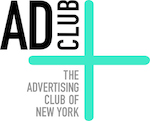Evergreen Focus on Green Marketing at the National Advertising Division
From Davis+Gilbert’s Advertising + Marketing practice group’s 8th edition of Trends in Marketing Communications Law

How have green claims (and related NAD challenges) evolved over the years?
As a self-regulatory adjudicative body, the NAD will look to the FTC for guidance as it reviews green advertising claims and evaluates the substantiation for such claims. Although the FTC’s Green Guides and FTC actions provide specific direction for certain types of claims (e.g., eco-friendly) and espouse general principles to be followed (e.g., no overbroad claims), the NAD has a lot of room in which to interpret the law and provide its own perspective on what constitutes legally compliant environmental advertising. For example, we successfully defended clients in two NAD challenges that, in one case, concerned use of the term “eco” in a product name, and in the other established guidelines for what qualifies as a “green” computer. These NAD decisions established de facto standards and provided industry guidance.
What are some claims that are becoming increasingly popular, but primarily informed by NAD precedent?
“Sustainability” claims — undoubtedly some of the most popular types of green marketing claims today — are primarily informed by NAD decisions. The Green Guides specifically address claims like “green” and “eco-friendly,” but do not specifically reference “sustainability”— largely because sustainability marketing was not as prevalent a decade ago. But NAD decisions help to fill this gap. In Beech-Nut Nutrition Company (Beech-Nut Baby Foods), NAD clarified that “sustainability” — like “green” and “eco-friendly” — is a general environmental benefit claim. When used without qualification, these claims are misleading because they may convey a wide range of reasonable, but unsupported, meanings.
The NAD has continued to issue decisions illustrating how to qualify these claims. For example, in Georgia-Pacific Consumer Products LP (Quilted Northern Ultra Soft & Strong Bathroom Tissue), the NAD found that certain “sustainability” claims were sufficiently qualified when consumers were not likely to miss or ignore the claims’ ties to specifically described environmental benefits (e.g., tree planting and energy efficiency).
“Carbon neutral” claims have also become increasingly popular. While the Green Guides do not discuss carbon neutrality explicitly, they offer general principles and specific guidance on carbon offsets that help inform treatment of carbon neutrality claims. Applying this guidance, the NAD found in LEI Electronics, Inc. (Eco Alkalines Batteries) that “carbon neutral” claims are not sufficiently supported when the advertiser fails to provide material information (when carbon reductions occurred or will occur) and provides an unreliable life cycle analysis.
Why has there been an uptick in challenges to green claims at the NAD?
Marketers are more focused on environmental claims and consumers are more interested in them because of the administration change in Washington, the constant barrage of environmental disasters and the further growing acceptance that climate change is a real and present danger. As such, regulators — governmental and self-regulatory — and class action counsel have become especially focused on environmental claims.
What trends are popping up in recent NAD cases that highlight the technical and practical risks of green marketing?
There is a continuing focus on potentially overbroad claims. Advertisers need to ensure that broad claims are qualified with specific, supportable benefits. For example, earlier this year in PurposeBuilt Brands (Green Gobbler Drain Clog Dissolver), the NAD heard a challenge concerning, in part, the claim “POWER meets Green” for a drain cleaning product. The NAD recommended that this claim be discontinued because it reasonably conveyed the unsupported message that the drain opener product achieved the unlikely combination of being both sufficiently powerful to unclog drains, but broadly environmentally friendly. On the flip side, the NAD recently found, in Safe Catch, Inc. (Pouched and Canned Tuna), that the claim “100% Sustainably Caught Wild Tuna” was sufficiently supported, largely because the claim was qualified and based on reputable methods that were clearly communicated to consumers.
Recently there has also been a focus on aspirational claims (like “aim to,” “commit to” and “strive to”); just because a claim is aspirational, it is not necessarily puffery. In Butterball, LLC (Butterball Turkey Products), a recent case concerning sustainability marketing, the NAD found that the claim that a company “recognizes” its “responsibility” to “preserve the planet” required evidence that the company had taken concrete steps to meet the stated goal.
The NAD has also challenged environmental marketing by independently monitoring the marketplace. What are these cases about?
When deciding to open a monitoring case, among the things the NAD considers is whether it would be filling a gap in the FTC’s and the state AGs’ regulatory efforts, and/or if the advertising addresses a novel or emerging issue of interest. Arguably, modern green marketing fits both of these criteria, and it is anticipated that the NAD will continue to monitor the marketplace — particularly if the FTC releases revised Green Guides.
The NAD recently challenged several environmental benefit claims in Georgia-Pacific Consumer Products LP (Quilted Northern Ultra Soft & Strong Bathroom Tissue) — including sustainability claims (“Premium comfort made sustainably”) that consumers may not understand were limited to specific described benefits. In Everlane, Inc. (Everlane ReNew Clothing), the NAD brought a monitoring case against a fashion brand, recommending modification to environmental benefit claims to ensure that there is no deception.
What can companies hoping to support environmental efforts do to manage legal risk?
Just as green technologies are rapidly evolving, this area is continuing to develop; industry standards are emerging, and updated regulatory guidance may soon be released. There will likely be further enforcement activity (particularly at the NAD) and class action counsel are on the hunt.
Companies must keep apprised of all NAD, FTC and state developments in this area to be sure the decisions they make are well informed and the advertising is legally compliant.
